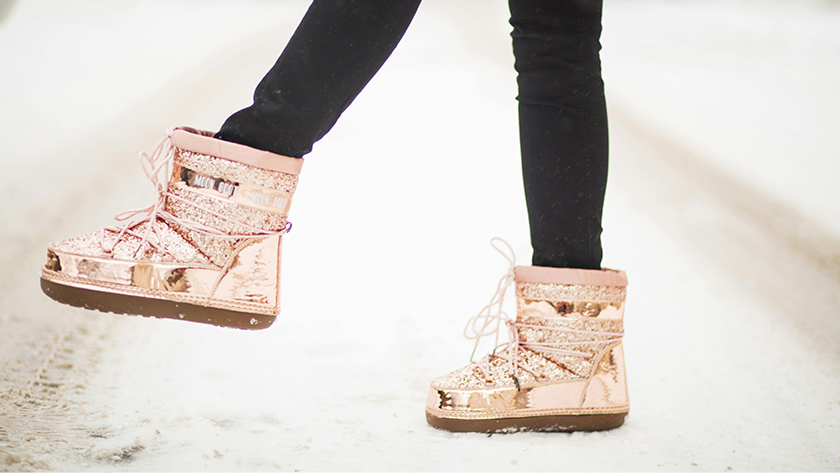
How to Prevent Foot and Nail Infections During Winter: Essential Tips for Healthy Feet
Winter weather can be tough on feet, creating an environment where foot and nail infections, like athlete’s foot and fungal nail infections, can thrive. Cold temperatures, layers of socks, and closed-toe shoes often lead to warmth and moisture buildup, which fungi love. Keeping feet healthy and preventing infections during the winter season requires some extra care. Here are essential tips to prevent foot and nail infections and keep your feet healthy all winter long.
1. Keep Feet Clean and Dry
One of the simplest ways to prevent foot infections during winter is by maintaining good hygiene. Even though it’s cold, feet can still sweat, especially when wrapped in warm socks and boots. To keep feet clean and dry:
- Wash feet daily with warm water and mild soap.
- Dry thoroughly, paying special attention to the areas between the toes where moisture tends to linger.
- If your feet sweat a lot, consider Foot Deo Spray to keep them dry throughout the day.
2. Choose Breathable Socks and Footwear
While it’s tempting to wear the thickest socks available during the winter, these can sometimes trap excess moisture, increasing the risk of fungal growth. Instead:
- Opt for moisture-wicking socks made from wool, bamboo, or synthetic materials that draw moisture away from the skin.
- Change socks daily and more often if your feet get damp.
- Choose boots and shoes with breathable materials and good insulation to keep feet warm and dry.
3. Let Your Shoes Dry Completely
Wearing damp or wet shoes is one of the biggest risks for developing foot and nail infections. Snow, rain, and slushy weather can make it difficult to keep footwear dry, but you can reduce moisture risks by:
- Alternating between pairs of shoes to give each pair time to dry.
- Removing insoles and allowing shoes to air out.
- Stuffing shoes with newspaper or using a boot dryer to speed up the drying process.
- Avoiding wearing the same pair of shoes for two days in a row whenever possible.
4. Trim Nails Properly
Keeping toenails properly trimmed can help reduce the chance of fungal infections, as short, well-groomed nails are less prone to cracks where fungi can enter. For safe trimming:
- Cut nails straight across to prevent ingrown toenails, which can be painful and lead to infections.
- Keep nails short and smooth to avoid rough edges that can snag on socks and create openings for bacteria.
- Use a clean and sanitized nail clipper and avoid sharing nail tools with others.
5. Avoid Walking Barefoot in Communal Areas
Though walking barefoot isn’t as common in the winter, some indoor spaces, like gyms, locker rooms, and even spas, can be breeding grounds for fungi that cause athlete’s foot and nail infections. Always:
- Wear flip-flops or shower shoes in communal areas, even if they seem clean.
- Sanitize shoes regularly with the Shoe & Sock Spray, as fungi can linger on footwear and spread.
6. Moisturize Smartly
Winter dryness can lead to cracked skin, which is more vulnerable to infection. However, over-moisturizing or using products that leave skin overly damp can increase the risk of fungal growth. For best results:
- Use a non-greasy moisturizer and apply it only to the tops and bottoms of your feet, avoiding the areas between your toes.
- If you have a history of foot fungus, the Foot Balm Green both moisturizes and protects against fungal infections.
7. Wear Proper Footwear for Winter Activities
Whether you enjoy winter sports or just getting outside, the right footwear is crucial for preventing infections. Winter boots that are waterproof, insulated, and fit well can help keep feet dry and protected from moisture, reducing the risk of infection. Consider:
- Choosing boots with a good fit to avoid rubbing or friction that can lead to sores or blisters.
- Making sure footwear is waterproof to prevent wet feet in snow or slush.
- Opting for insulated shoes to keep feet warm without adding extra socks, which may increase sweating.
8. Monitor Feet for Early Signs of Infection
Winter footwear often hides our feet, so it’s easy to miss early symptoms of foot or nail infections. Regularly checking your feet can help you catch any issues early. Look out for:
- Redness, itching, or scaling skin, particularly between the toes (early signs of athlete’s foot).
- Nail discoloration, thickening, or brittleness, which could indicate a fungal nail infection.
- Sores or blisters that don’t heal or look infected.
9. Boost Foot Health with a Balanced Diet
While it might seem unrelated, a healthy immune system is your body’s best defense against infections, including those affecting feet and nails. Foods rich in vitamins and minerals, like Vitamin C, zinc, and probiotics, help keep skin and nails healthy and resilient. Adding:
- Leafy greens, which are high in vitamins and antioxidants
- Nuts and seeds for healthy fats and minerals
- Yogurt and fermented foods for probiotics to support immune health can make a difference in overall skin health and reduce the likelihood of infections.
10. Treat Any Signs of Athlete’s Foot and Nail Fungal Immediately
Since athlete’s foot can easily spread to the toenails and develop into a nail fungal infection, treating it quickly is essential, especially during winter when feet are often confined in tight spaces. Use:
- Athlete's Foot Solution is rich in aloe vera and almond oil and heals the infection leaving the skin softer and more nourished.
- Nail Mycosis Solution with glycerin, tea tree oil and heals the toes within a few weeks and prevents the fungal from growing.
Follow these tips, and your feet will be ready to take on the winter months in comfort and health!







